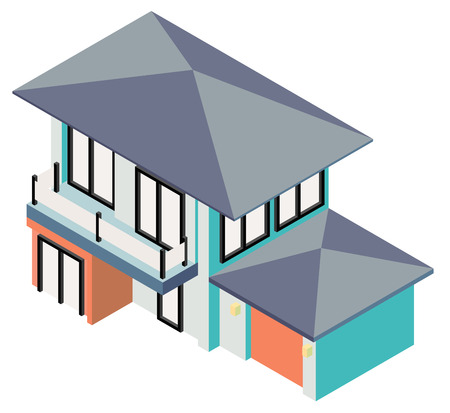1. Understanding Garage Conversion ROI
When it comes to maximizing the return on investment (ROI) for your garage conversion project, it’s essential to grasp the basics of how these projects impact property value in the U.S. real estate market. At its core, ROI measures the profit you gain compared to the money you spend. For garage conversions, this means evaluating both upfront costs and potential increases in your home’s resale price. Key metrics include total project cost, added square footage, and comparative home values in your neighborhood. On average, a garage conversion in the United States can cost between $15,000 and $40,000 depending on size, finishes, and whether plumbing or HVAC upgrades are needed. Yet, these projects often recoup 60%–80% of their cost at resale, especially in high-demand urban areas or regions with tight housing inventory. Factors such as local zoning laws, current housing trends, and the quality of workmanship all play significant roles in determining the final ROI. By understanding these fundamentals, you’re better positioned to make design and financial decisions that truly enhance your property’s value.
2. Identifying High-Impact Uses for Your Space
When planning a garage conversion, choosing the right purpose for your space is crucial to maximizing ROI. American homeowners and buyers are increasingly looking for adaptable, functional spaces that reflect contemporary lifestyle needs. By analyzing local real estate trends and buyer preferences, you can pinpoint which uses deliver the strongest returns on investment. Below is a breakdown of popular garage conversion ideas and their typical impact on resale value:
| Conversion Type | ROI Potential | Key Benefits | Best For |
|---|---|---|---|
| Accessory Dwelling Unit (ADU) | High (60–80%) | Rental income, multi-generational living, increased square footage | Urban/suburban areas with rental demand |
| Home Office | Moderate to High (50–70%) | Remote work trends, dedicated workspace, tax benefits | Professionals and families working from home |
| Home Gym | Moderate (40–60%) | Health-focused lifestyle, convenience, personal wellness | Fitness enthusiasts and families with active lifestyles |
| Media/Entertainment Room | Moderate (45–65%) | Family gatherings, modern entertainment needs, resale appeal to young buyers | Younger families, tech-savvy buyers |
| Guest Suite | High (55–75%) | Hospitality, flexibility for visitors or aging relatives, privacy features | Larger families or homes in high-tourism areas |
Trends Driving Demand in the U.S.
The shift toward remote work has made home offices and ADUs especially attractive—buyers often pay a premium for properties with dedicated workspaces or rentable units. Likewise, health-conscious Americans value an in-home gym that saves time and supports wellness goals. Understanding your local market is key; urban buyers may prize rental income potential, while suburban families might favor flexible guest accommodations or recreation rooms.
Selecting the Right Conversion for Maximum Value
Your final decision should balance current real estate trends with your property’s unique characteristics. Evaluate neighborhood demographics: are most buyers young professionals needing office space, growing families seeking playrooms, or investors interested in ADUs? Consult with a local real estate agent to align your project with what’s in highest demand—and always consider functionality and quality design as drivers of long-term value.

3. Smart Budgeting and Cost Management
Maximizing ROI on your garage conversion starts with a sharp focus on budgeting and cost management. Striking the right balance between affordability, functionality, and style is key to delivering a space that not only looks great but also appeals to future buyers or renters. Here’s how you can keep your renovation on track financially without sacrificing what matters most.
Prioritize Your Must-Haves
Begin by defining your non-negotiables: Is it essential to have a full bathroom? Will custom cabinetry make the space truly functional? Pinpointing these priorities helps you allocate funds where they’ll have the greatest impact, both for your lifestyle and resale value.
Savvy Saving Strategies
- Repurpose Existing Structures: Work with your garage’s original footprint and walls whenever possible—major structural changes can quickly balloon costs.
- DIY Where It Makes Sense: Painting, basic landscaping, or even assembling furniture are great areas for hands-on involvement that won’t compromise quality.
- Select Cost-Effective Finishes: Laminate flooring or ready-to-assemble cabinets often mimic high-end materials at a fraction of the price.
Know When to Splurge
- Energy-Efficient Upgrades: Invest in good insulation, double-pane windows, and efficient HVAC systems. These upgrades not only lower utility bills but also boost long-term value and marketability.
- Quality Fixtures & Hardware: Durable faucets, lighting, and door hardware may seem minor, but they’re the details buyers notice—and remember.
Plan for Contingencies
No renovation goes exactly as planned. Set aside 10–15% of your total budget for unexpected issues—think hidden water damage or electrical surprises—to keep your project stress-free and on schedule.
The Bottom Line
A design-forward garage conversion doesn’t have to break the bank. By knowing when to splurge and when to save, you’ll create a space that’s both stunning and smart—maximizing every dollar for the best possible return on investment.
4. Design Choices That Drive Value
When converting your garage into a living space, the design choices you make are crucial for maximizing ROI. U.S. homebuyers and renters increasingly prioritize modern aesthetics, energy efficiency, and features that enhance everyday living. Here’s how you can ensure your project stands out in the market:
Modern Aesthetics: Clean Lines and Neutral Palettes
Contemporary design trends have a significant impact on resale value. Opt for an open layout, large windows for natural light, and neutral color palettes—think whites, soft grays, or muted earth tones—that appeal to a broad range of buyers. Minimalist hardware and sleek finishes in kitchens or bathrooms (if applicable) reinforce a modern look.
Energy Efficiency Upgrades
Energy efficiency is top-of-mind for American homeowners due to both cost savings and environmental awareness. Investing in proper insulation, energy-efficient windows, LED lighting, and smart thermostats not only reduces utility bills but also adds tangible value to your conversion.
| Feature | Benefit | Estimated ROI Impact |
|---|---|---|
| Energy-Efficient Windows | Reduces heating/cooling costs; improves comfort | 5-10% |
| LED Lighting | Lowers electricity use; modern appeal | Up to 5% |
| Smart Thermostat | Automates climate control; tech-savvy touch | Varies by region |
| High-Quality Insulation | Makes space livable year-round; energy savings | 5-8% |
Features That Resonate in the U.S. Market
Certain features consistently deliver higher returns because they align with American lifestyle needs:
- Flexible Space: Design with versatility in mind—a home office, guest suite, gym, or rental unit can adapt to changing buyer needs.
- Laundry Hookups: In-unit laundry dramatically increases convenience and appeal.
- Adequate Storage: Built-in closets or shelving offset the storage lost when converting the garage.
- Private Entrance: Especially valuable if you plan to rent out the converted space.
Sleek Finishes & Durable Materials
Select materials that are not only stylish but also durable and low-maintenance. Luxury vinyl plank flooring offers the look of hardwood with greater resilience—ideal for busy households or rental properties. Quartz countertops and tile backsplashes in kitchenettes or bathrooms are highly desirable upgrades that signal quality.
Pro Tip: Consider Regional Preferences
If you’re located in warmer regions like California or Texas, focus on maximizing indoor-outdoor flow with sliding doors or patios. In colder climates, radiant floor heating or mudroom-style entryways add functional value buyers will notice.
Smart design choices tailored to U.S. market preferences can elevate your garage conversion from basic remodel to high-return investment—making every square foot work harder for your bottom line.
5. Navigating Permits and Zoning Laws
Before swinging a hammer or drawing up plans for your garage conversion, it’s essential to understand the maze of local permits and zoning laws. This isn’t just bureaucratic red tape—failing to comply can result in fines, forced deconstruction, or even legal battles that eat away at your ROI. Every city, town, or county in the U.S. has its own set of ordinances regarding what you can and cannot do with your property. For example, some neighborhoods have restrictions on adding rental units or require specific parking accommodations.
Start by visiting your local building department or municipal website. Request clear documentation about requirements for accessory dwelling units (ADUs), which is often how garage conversions are classified. You’ll likely need a building permit, and depending on your plans—such as adding plumbing or electrical systems—you may need additional specialty permits. Be prepared for inspections at various stages of the project.
Beyond permits, zoning laws can dictate everything from minimum square footage to setbacks from property lines and ceiling heights. If you’re converting your garage for rental income, check if short-term rentals (like Airbnb) are allowed, or if long-term tenants are permitted under local laws. Not following these rules can mean losing out on potential revenue streams altogether.
Consider consulting with a local architect or contractor who is familiar with regional codes; their expertise can help you avoid missteps that could be costly to fix later. Remember, a smooth permit process not only protects your investment but also adds credibility and value when it’s time to sell. Ultimately, navigating these legalities upfront is a strategic move that safeguards your ROI and ensures your new space stands the test of time—and scrutiny.
6. Maximizing Curb Appeal and Marketability
When it comes to boosting the return on your garage conversion investment, never underestimate the power of curb appeal. First impressions count—especially in today’s digital real estate marketplace, where potential buyers often decide whether to schedule a showing based on online photos alone. The way your converted garage looks from the street can make or break its marketability, setting the stage for higher offers and faster sales.
Designing an Exterior That Stands Out
A cohesive exterior is key to blending your garage conversion seamlessly with your home’s existing architecture. Choose siding, paint colors, and roofing materials that match or complement the main house. Avoid telltale signs of a “tacked-on” addition—consistency in design signals quality craftsmanship and thoughtful planning, reassuring buyers about the overall integrity of the property.
Landscaping: The Secret Ingredient
Strategic landscaping does more than beautify—it frames your new living space and draws attention to its best features. Fresh sod, low-maintenance shrubs, modern planters, and even a small patio can transform the approach to your converted garage. Adding outdoor lighting not only boosts safety but also makes your property pop in twilight listing photos—a detail that can set you apart in competitive markets like California or Texas suburbs.
Understanding Neighborhood Context
While bold design choices might excite you, it’s important to consider what sells in your specific neighborhood. Research local trends—are buyers drawn to contemporary finishes or do they favor traditional charm? Staying within (or just ahead of) neighborhood standards helps maximize ROI without over-improving for the area. Talk to a real estate agent familiar with your zip code; they’ll know which exterior upgrades have the best payoff.
Showcasing Online for Maximum Impact
Finally, invest in professional photography and staging for your listing. Daylight shots with vibrant landscaping and a welcoming façade will entice more clicks—and more foot traffic. If you’ve included thoughtful touches like a dedicated entrance or covered porch, highlight these in both images and descriptions to show how your converted garage adds tangible value and versatility to the property.
7. Evaluating Long-Term Value vs. Quick Flips
When it comes to maximizing ROI on your garage conversion project, one of the most critical decisions is whether to hold onto your newly converted space for steady rental income or sell it right away for a quick profit. Both options offer unique advantages, and the best choice depends largely on current U.S. real estate trends, your financial goals, and local market dynamics.
Holding for Rental Income: Building Wealth Over Time
Converting your garage into an accessory dwelling unit (ADU) or a high-quality rental suite can be a smart move if you’re looking to build long-term wealth. Given the ongoing housing shortage in many American cities, demand for rental units remains strong—especially for well-designed, private spaces like converted garages. Steady monthly rent payments can help offset your initial investment and provide passive income, while property values typically appreciate over time. Additionally, holding the property allows you to take advantage of tax benefits such as depreciation and deducting certain expenses associated with being a landlord.
Benefits of Renting Out Your Converted Garage:
- Consistent cash flow from tenants
- Potential tax deductions on mortgage interest and repairs
- Property value appreciation in hot markets
- Flexibility—use the space yourself in the future or adjust rent as the market changes
Selling for Immediate Profit: Capitalizing on Market Timing
If you prefer instant returns, selling your garage-converted property might be appealing—especially in today’s competitive real estate landscape where turnkey homes are highly sought after. By marketing your conversion as a move-in-ready ADU or guest house, you can attract buyers willing to pay a premium for extra living space or income potential. This approach frees up capital immediately and eliminates the responsibilities of being a landlord.
Advantages of Selling Right Away:
- Lump sum profit that can be reinvested elsewhere
- No long-term management or tenant issues
- Take advantage of peak home prices in seller’s markets
What Do Current Trends Suggest?
According to recent U.S. real estate data, demand for flexible living solutions and rental properties remains strong—especially in urban areas with housing shortages. However, interest rates and home prices are fluctuating rapidly, making timing crucial if you plan to sell. Many homeowners find that renting offers more predictable returns over time, while selling can yield significant profits if the local market is hot.
The Bottom Line
Your optimal strategy depends on your risk tolerance, financial goals, and willingness to manage tenants. If you seek passive income and long-term appreciation, holding for rental income is often the way to go. If you’d rather cash out quickly and avoid property management headaches, selling may be your best bet. Whichever path you choose, understanding current trends and aligning them with your personal objectives will help ensure you truly maximize the ROI on your garage conversion project.


